If you’re fresh into New Year’s diet resolutions, you may not want to read this week’s post since it’s all about le beurre – that’s right, butter. The French adore butter. They use it to cook. They spread it on toasted baguettes for breakfast. They count on it in pastries and desserts. Simply put, the French know there’s no substitute for butter’s rich taste and flavor. But then, the French are not dealing with just any old butter – they use French butter.
It’s hard to imagine that something as quotidien as butter would be worth noticing, even in France. You have to hand it to the French, though. They have that “je ne sais quoi” about so many things, including their beurre which is divine.
What is it that sets butter in France apart?
First, French butters just taste better. They have a depth of flavor and a nuttiness that’s missing in American butter. There is also a bit of a tang due to the cultured nature of French butter. More important, butters made in France have a higher butterfat content – and lower water content – than their counterparts in America. French butter has 82% or higher compared to just 80% in the U.S. It’s hard to believe a few points of butterfat would make a big difference but they do. Just ask any pastry chef on either side of the Atlantic.
There’s more to the French butter story, however.
You probably know that many of those amazing French cheeses are still made using traditional methods. Similarly, some French butters continue to be made the old-fashioned way. Take the Beurre d’Echiré for example. This sublime French butter is produced à l’ancienne (as in olden days) in the village of Echiré southwest of Poitiers in the Deux-Sèvres region of France. The stellar quality of the milk – due to the care taken with the cows that graze nearby, the slow pasteurization at low temperatures, the culturing process and resulting acidity, and the traditional churning methods in les barattes (oak barrels) produce a butter like no other. As one might expect, the Beurre d’Echiré has AOC / AOP status in recognition of its finesse and taste of the terroir, i.e. the particular place where it is made. Other AOC / AOP butters in France include the beurre d’Isigny from Normandy, butters from Charentes-Poitou (the region around Echiré) such as Celles-sur-Belle, and the beurre de Bresse from eastern France.
French butters come unsalted – or doux – and salted – either sel or demi-sel. Salted butter in France contains 3% salt which is added after churning. And half-salted butter, le beurre demi-sel, has between .5 and 3% salt. In Brittany, cooks often use salted butter in recipes – even in cakes – no doubt due to the abundance of wonderful sea salt gathered nearby, whereas the majority of French chefs and home cooks tend to use unsalted butter. Sometimes butter makers even add sea salt in large crystals which give the butter a slightly crunchy texture. I adore this variety on baguettes for breakfast. And if I’ve somehow bought beurre doux, I will sprinkle a bit of loose fleur de sel myself on top of the buttered baguette!
You can buy French butter at the supermarket where you’ll find a large selection typically wrapped in foil or waxed paper. Nowadays, they even have beurre allégé or léger (light butter) for those watching their waistlines. Note that this type of butter is ok for spreading on toast but not very good for cooking due to its high water content and additives. Alternatively, you can buy butter in bulk from cheese vendors at French open-air markets. On the amount, you can gesture how much you want or feel free give the metric system a try – half a kil0 or 500 grammes de beurre would be about a pound of butter, 250 grammes would equal about half a pound, and so on.
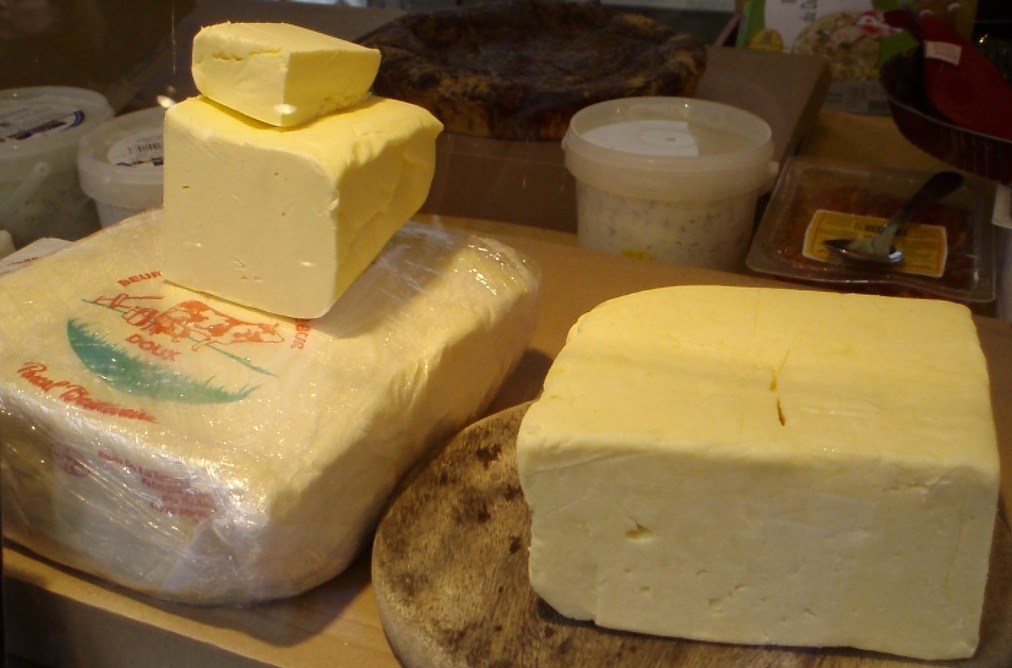
For some reason, while the French slather butter on their baguettes for breakfast, they don’t tend to butter their bread at lunch or dinner. So unless you’re at an upscale restaurant in France, yummy French butter won’t automatically come with your basket of bread. You’ll have to ask for it. After getting your waiter’s attention with a nice “Monsieur!,” you can request butter by saying “Du beurre, s’il vous plaît.” You will be brought a small slab of butter or if you’re really lucky and your restaurant goes for the best, a small disk of beurre d’Echiré still wrapped in its gold foil. And at Ladurée’s restaurants in Paris, the French butter arrives in a special signature wrapper with twists at both ends so that it almost looks like candy.
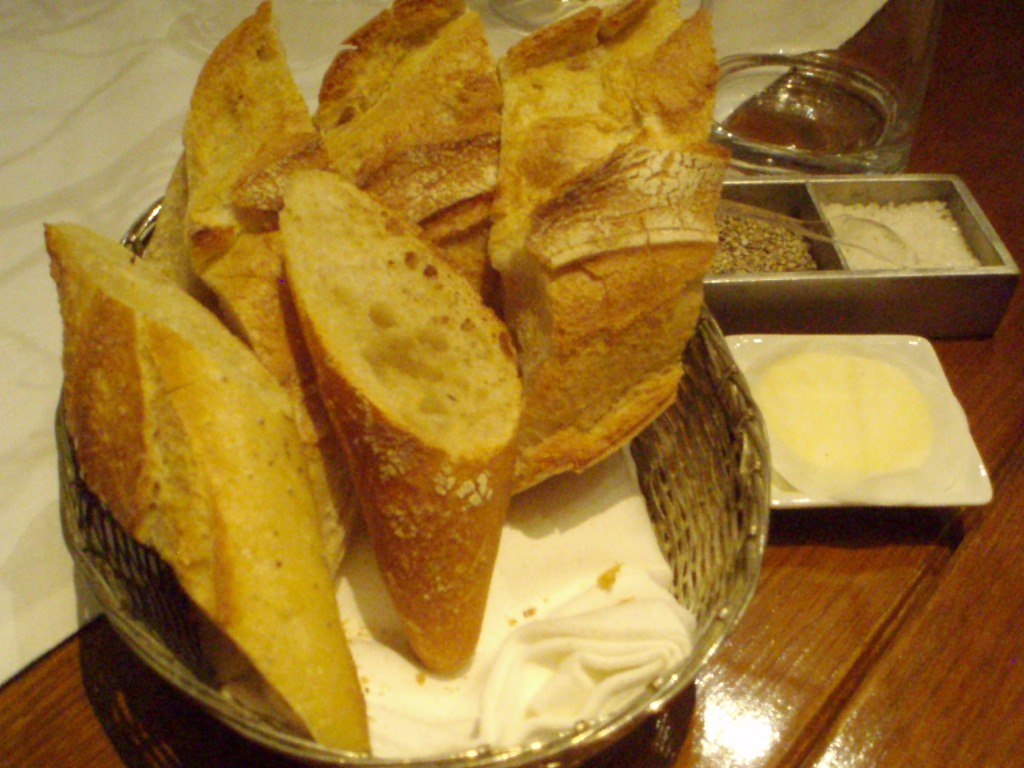
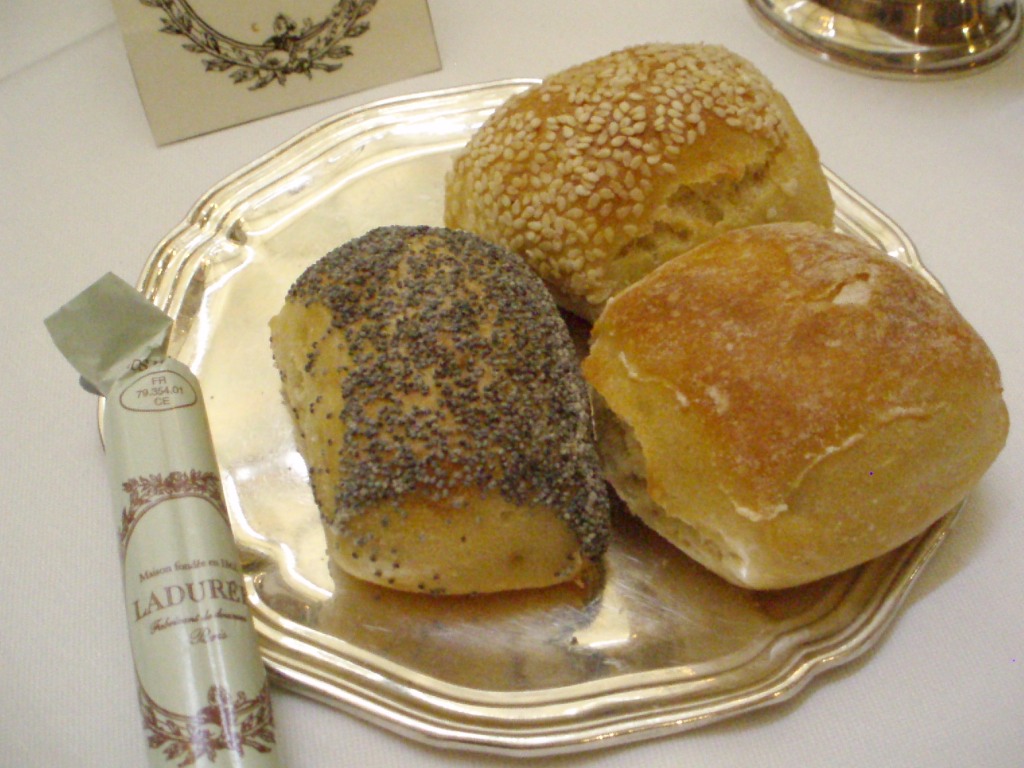
There are a couple of other French idiosyncrasies when it comes to butter. One of the most common sandwiches found in France is the jambon-beurre. It’s part of a baguette cut in half lengthwise, then spread with butter inside and layered with slices of ham. No mayo, no lettuce, no tomato. Just baguette and butter and ham. I also have dined with French friends who serve butter with the cheese course. I watched them as they first put butter on their bread and then added a nice chunk of Camembert or Brie or even Roquefort. Talk about over the top. I tried my cheese this way, and of course, it’s fantastically good. Let’s just hope that red wine really does cancel out the side effects of all that fat!
You may know that the unofficial symbol or mascot of France is the Gallic rooster. I have to think, though, that the real unofficial symbol of the country is la vache, or the cow. France is blessed with a geography and climate that favor cows and their tremendous milk production. Couple this with the special French savoir-faire for making glorious butter, cream and cheeses and you have a match made in heaven.
French Take-Out ~ La France à emporter
Thanks to global trade, Americans can find several French butters at gourmet shops and upscale supermarkets across the country. I did a quick tour of some shops in Texas recently and saw some good offerings. Celles-sur-Belle and the beurre d’Isigny would be my top choices for spreading on baguettes or making cakes and pastries. There was even a butter with coarse sea salt from the Camargue in southern France. And the cost? Even though these butters are not cheap, their prices are fairly reasonable given that they are imported all the way from France.
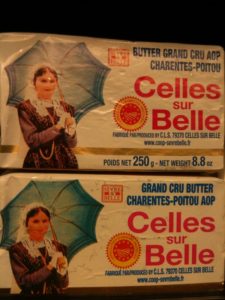
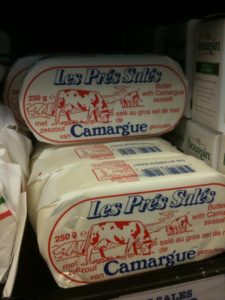
One butter that I see everywhere in France and quite often in the U.S. is the mass-produced Beurre Président. While it’s definitely a step up from American butter, le Beurre Président is pretty basic for France. So if you’re going to go for French butter, consider one of the top-notch versions. Or conduct a taste test at home and see which one(s) you prefer. After all, “A chacun son goût” which means ‘To each his own,’ or more literally, ‘Everyone to his taste’!
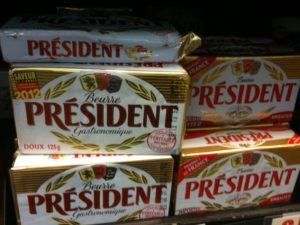
NB: These days, there are a variety of American-made butters which are produced more according to French methods and have a higher butterfat content. Plugra would be one. Be sure to check your local markets for various options.
